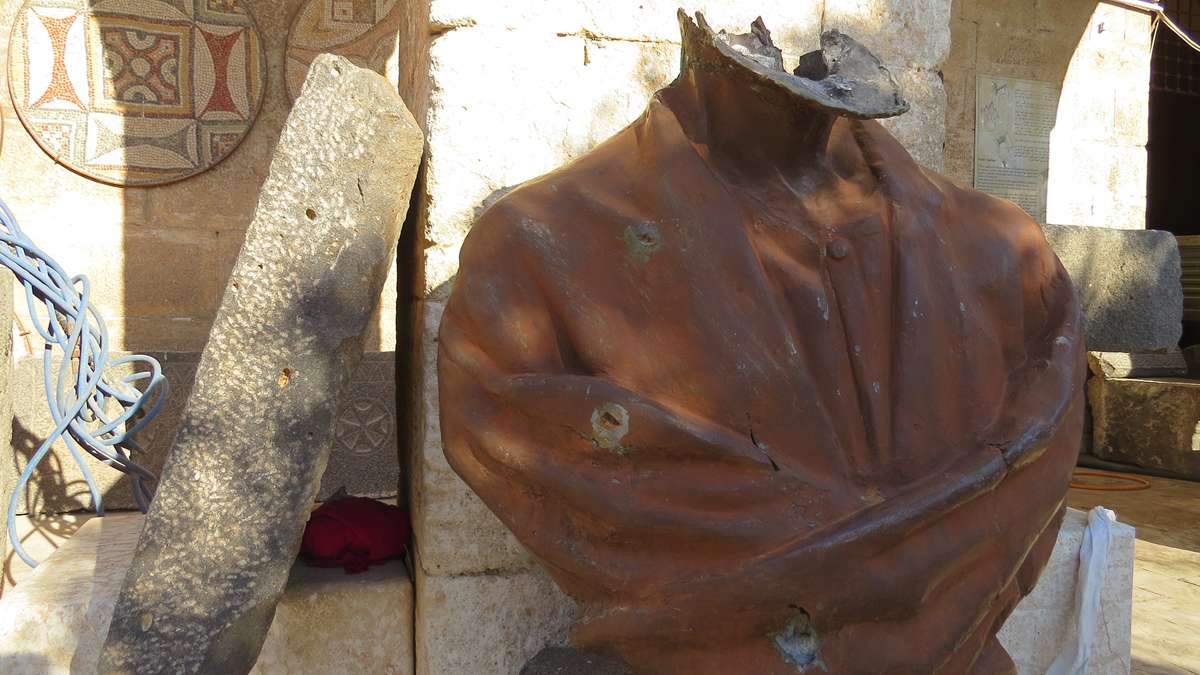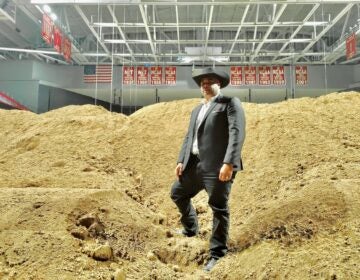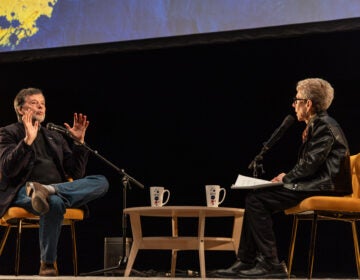Seeking to protect ancient Syrian treasures, curators learn modern U.S. techniques
ListenFor three days in June, in an undisclosed location in Turkey, 20 unnamed museum curators from Syria met with their counterparts from the Smithsonian Institution and the University of Pennsylvania for a workshop on how to protect cultural artifacts during wartime.
The secrecy was to avoid making themselves targets of the Islamic militant force ISIS — or Al-Nusra, the Al-Qaeda front in Syria — because their museums are already targets.
For example, the Ma’Arra Museum, near Aleppo, has been attacked by Islamic forces because it contains tile mosaics dating to the earliest days of Christianity.
“There are bullets from small-arms fire, it has shrapnel damage, it has holes in the roof. The doors to the main structure have been completely destroyed … there are mortar holes inside the museum courtyard,” said Brian Daniels, director of the Cultural Heritage Center at the University of Pennsylvania Museum.
Daniels and a handful of colleagues facilitated workshops for Syrian curators who do not have the resources or training to protect their inventory from the war fracturing the country. Sheets of Tyvek — a construction-grade fabric — were distributed so artifacts that cannot be moved can be wrapped. The Syrian curators were given video cameras to be able to make a quick visual record of holdings in danger of being looted.
“It’s amazing what you can do if you know how to walk through a room with a digital video camera,” said Daniels. “We have strategies where we can wall off certain areas of a museum. That has been tried successfully in Afghanistan and Iraq.”
Much of what the Syrian curators were learning came from manuals created during World War II by the “Monuments Men.”
Daniels said he saw curators who had suffered gunshot wounds in the line of duty.
“There was this absolute extraordinary commitment from these individuals,” said Daniels. “What they were trying to do is something much greater than the conflict. These things represented who they were and how they wanted the world to understand them.”
The three-day workshop was made possible with funding by the J.M Kaplan Fund in New York. Pending additional funding, Daniels hopes more workshops will be possible next year.
WHYY is your source for fact-based, in-depth journalism and information. As a nonprofit organization, we rely on financial support from readers like you. Please give today.








